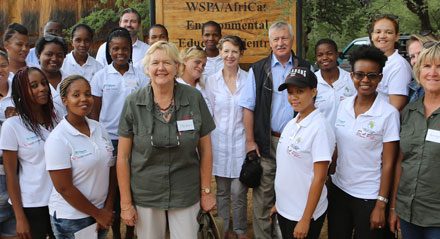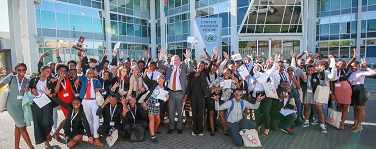
More bushblocks from CCF

Dr. Laurie Marker, CCF’s Founder and Executive Director (Photograph by Hilma Hashange)
To realise this noble undertaking, the Cheetah conservation body said it will revisit its Bushblock project to ensure efficiency and sustainability.
When completed, CCF’s commitment will yield over 600 metric tons of biomass fuel per month, employ dozens of Namibians, and restore nearly 570 hectares of habitat to productive use.
The Bushblok business was developed a decade ago when Dr. Laurie Marker, CCF’s Founder and Executive Director, discovered that bush encroachment was injuring cheetahs and significantly reducing available productive rangeland and farmland. With the help of a USAID grant, CCF developed sustainable methods of selectively harvesting the bush, and processed it into an award-winning low-emission, high heat fuel log called Bushblok. Bushblok won the Intel Tech Award for the Environment in 2008.
Yet, the project was generally considered over-capitalised and would not have been able without donor money. The blocks are expensive compared to charcoal, and consumer scomplained about excessive smoke. But once the statutory framework for Independent Power Producers was finalised, it opened new opportunities for the Bushblock project.
CCF will purchase new harvest equipment, re-tool its Bushblok biomass factory, and train new factory employees on the equipment. CCF will also educate local farmers in sustainable harvesting methods. The production process will be streamlined and will more efficiently harvest thornbush and produce biomass fuel.
“CCF believes that developing biomass fuel opportunities in Namibia can address several critical issues. First, it restores valuable acreage that has been lost to bush encroachment, rendering it fit for use again as productive livestock farming land, and incidentally as rangeland for cheetahs and their prey. One 2008 study estimated that the problems of bush encroachment cost the Namibian economy over $700 million Namibian dollars ( ?$100 million USD) a year” the organisation said in a statement announcing its renewed focus on the Bushblock concept. “Additionally, CCF hopes by its efforts to encourage wider use of biomass energy. Biomass energy has the potential to provide a clean, renewable resource for electric generation. Namibia’s electric utility, NamPower, is estimating a power generation deficit of over 150 Megawatts by the end of 2013, with most of its power being supplied by aging coal-fired plants. With tens of millions of hectares of thornbush available for harvest, which could potentially provide over 100 million tons of fuel, Namibia could easily meet its current and future generation needs by developing the proper capacity. Such an effort would also generate hundreds of jobs, which, in a country with an estimated 50% unemployment rate, is no small matter.
To realise its commitment, the foundation said it will be seeking corporations and individuals who can provide investment funding, expertise, or other resources toward the development and implementation of best-practices and strategies for bush harvest and processing as part of an emerging biomass fuel industry in Namibia.
CCF said its goal is to restore the habitat of the bushland, increase available grazing lands and stimulate the biomass industry in Namibia. The biomass industry will eventually create hundreds of entry-level jobs, which are desperately needed in Namibia. Even more compelling is the fact that the factors in play in Namibia that make biomass energy such an opportunity are not unique in Africa. Solutions developed by CCF in Namibia can be exported to other sub-Saharan African countries with similar issues.









































